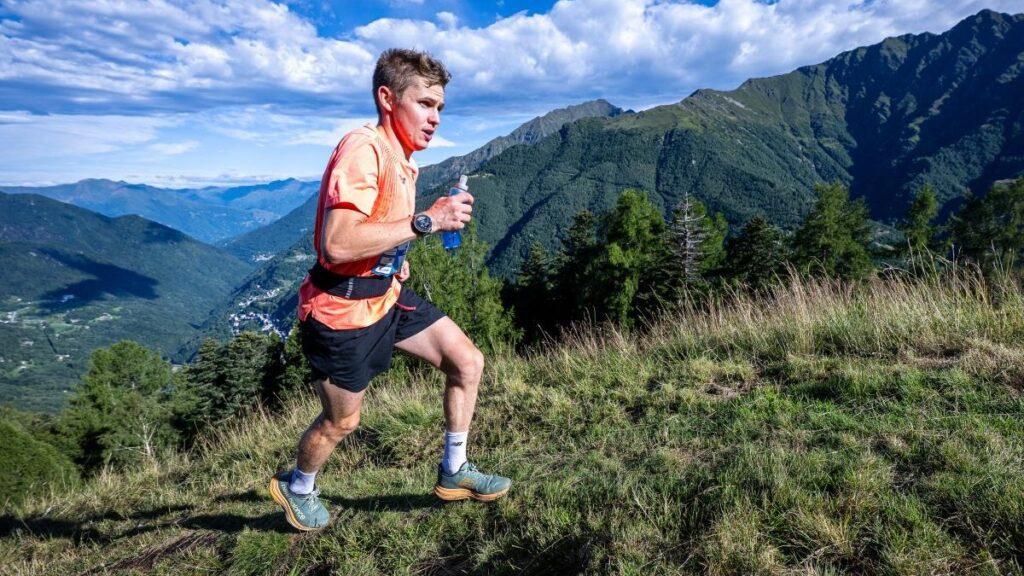This week in trail and ultrarunning saw notable performances and events that may have implications for seasoned athletes as they prepare for higher-stakes races. The Speedgoat by UTMB, a cornerstone event in the U.S. trail running calendar, delivered compelling outcomes. Ryan Becker emerged victorious in the 50K, completing the challenging race at Snowbird Resort with an impressive 5:17:26, setting himself up for an opportunity to represent the U.S. at the Trail World Championships. His performance demonstrated not only resilience but strategic pacing, particularly as he managed to hold off Erik Sorenson, who finished just seconds behind. These results underscore the importance of strong early race tactics, as they effectively minimized time loss even as Becker faced other competitors within striking distance by the latter stages.
In the women’s division, Jennifer Lichter shattered the previous course record with a finish time of 5:54:45, marking her first sub-six-hour completion. Notably, Lichter’s leading position throughout the race highlights the efficacy of aggressive yet controlled pacing in distance management, a tactic often cited by elite ultrarunners planning their race strategies. Emma Cook-Clarke and Grayson Murphy trailed behind, both delivering impressive finishes that cleared the six-hour mark, emphasizing an evolving competitive landscape among female trail runners.
The 28K event at Speedgoat similarly revealed shifts in athlete performance. Christian Allen took the men’s win with a solid 2:50 finish, while Kodi Kleven led the women, asserting her capability in varying distances. Each athlete’s decision to drop down from longer formats reveals a tactical consideration of fitness and race-day readiness, particularly in a period marked by extensive training volume. The trend of fluctuating distances to optimize race success is becoming increasingly common among experienced athletes, allowing for race strategies that adapt based on form and fitness levels.
Meanwhile, other events like the Giir di Mont in Italy showcased the tactical highlights of uphill racing. Richard Omaya Atuya’s repeat victory in the Giir di Mont Uphill race, clocking in at 39:49, underlines the effectiveness of a focused climbing strategy in courses that reward strength in altitude. It’s worth noting that athletes must continuously refine their uphill techniques and energy management for such races, where performance can hinge on climbing efficiency. Scout Adkin’s narrow victory in the women’s race just reminded competitors of the fine margins in mountain running, where positioning might dictate the outcome.
Weather disturbances in Central Europe have also influenced race strategies, evidenced by the recent Tatra Skymarathon. The event’s distance was truncated due to adverse conditions, but key athletes still utilized the interim finish point for rankings in the Skyrunner World Series. Such scenarios emphasize the need for runners to build mental and physical resilience, preparing them for unexpected race dynamics. Athletes should not only consider optimal training but also strategies for dealing with race-day contingencies that deviate from planned courses.
The Never Summer race in Colorado continued to shape the high-altitude racing narrative, showcasing the toll an elevation gain of over 11,000 feet can take on performance. Clint Anders’ extended lead in the 100K, culminating in an 11:57 finish, reflects both physical endurance and strategic pacing across a challenging terrain. Observing Anders, seasoned ultrarunners can glean the importance of segmentation in pacing over long, vert-heavy races, particularly at high altitudes where fatigue can accumulate rapidly.
Race technology and gear innovation remain paramount for serious trail runners. Gear reliability and weight considerations can significantly impact performance, particularly in demanding mountain conditions. The emerging focus on lighter pack options and dynamically efficient footwear has been noted in recent competitions, where marginal gains can differentiate the podium finishes. Keeping abreast of evolving technologies might enable athletes to enhance their reliability and overall race strategy.
Athletes must also be cognizant of their own physical limits and recovery protocols, particularly as more races expose competitors to extreme conditions. The recent incidents at various events, where adverse weather led to shortened courses or race stoppages, serve as reminders of the importance of adaptive pacing strategies and personal physiological assessments. Successful ultrarunners will factor in their recovery time post-race as they prepare for upcoming races, utilizing insights gathered from performances to calibrate their training cycles moving forward.
In summary, as athletes prepare for their next mountain ultramarathon, they should focus on refining their pacing strategies, adaptation to race-day variables, and gear choices that maximize performance without increasing load. The ongoing evolution within race formats and unpredictable conditions should serve as a catalyst for ongoing personal development, reinforcing that success on race day is built on a combination of tactical intelligence, adaptive strategies, and disciplined training. Ultimately, maintaining a flexible approach during both training and racing can prove beneficial in harnessing the nuances of mountain ultrarunning.
